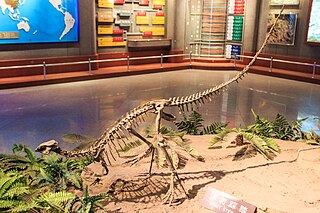 W
WAgilisaurus is a genus of ornithischian dinosaur from the Middle Jurassic Period of what is now eastern Asia. It was about 3.5-4 ft long, 2 ft in height and 40 kg in weight.
 W
WBabakotia is an extinct genus of medium-sized lemur, or strepsirrhine primate, from Madagascar that contains a single species, Babakotia radofilai. Together with Palaeopropithecus, Archaeoindris, and Mesopropithecus, it forms the family Palaeopropithecidae, commonly known as the sloth lemurs. The name Babakotia comes from the Malagasy name for the indri, babakoto, to which it and all other sloth lemurs are closely related. Due to its mix of morphological traits that show intermediate stages between the slow-moving smaller sloth lemurs and the suspensory large sloth lemurs, it has helped determine the relationship between both groups and the closely related and extinct monkey lemurs.
 W
WBellusaurus was a small short-necked sauropod dinosaur from the Middle Jurassic which measured about 4.8 metres (16 ft) long. Its fossils were found in Shishugou Formation rocks in the northeastern Junggar Basin in China.
 W
WBreviceratops was a herbivorous ceratopsian dinosaur from the Late Cretaceous of Mongolia.
 W
WCasaleia is an extinct genus of ants in the formicid subfamily Amblyoponinae described by Pagliano & Scaramozzino in 1990 from fossils found in Europe. The genus contains four species dating from the Eocene to Miocene, Casaleia eocenica, Casaleia inversa, Casaleia longiventris, Casaleia orientalis.
 W
WDrotops is a genus of trilobites from the order Phacopida, family Phacopidae that lived during the Eifelian of the Middle Devonian. It was described by Struve in 1990 under type species Drotops megalomanicus. Their fossils are found in present day Morocco, specifically the Maïder Region located South West of Erfoud.
 W
WThe dune shearwater, also known as the Canarian shearwater or Hole's shearwater, was a relatively large shearwater which bred in the Canary Islands archipelago of the North Atlantic Ocean. Fossils have also been found in the Figueira Brava cave archaeological site on the western coast of Portugal. The specific epithet honours Mrs Jean Hole who collected fossil material of the species on the Jandia Peninsula of Fuerteventura. It was intermediate in size between the Manx and Cory's shearwaters. Its breeding colonies were in dune fields, in contrast to those of the smaller and sympatric lava shearwater which bred in lava fields. Extinction of the species occurred about 2000–3000 years ago, contemporaneously with the first human settlement of the islands by the Guanches, with the cause likely to be human predation.
 W
WEmausaurus is a genus of thyreophoran or armored dinosaur from the Early Jurassic (Toarcian). Its fossils have been found in Mecklenburg-Vorpommern, northern Germany. Emausaurus is the only known Toarcian thyreorphoran and it is also the only dinosaur from the Ciechocinek Formation with a formal name.
 W
WEpachthosaurus was a genus of titanosaurian sauropod dinosaur from the Late Cretaceous. It was a lithostrotian titanosaur. Its fossils have been found in Central and Northern Patagonia in South America.
 W
WFagotia wuesti is an extinct species of freshwater snail with an operculum, an aquatic gastropod mollusk in the family Melanopsidae.
 W
WKonobelodon is a genus of amebelodont from southern Europe, China, and North America.
 W
WLapillopsis is an extinct genus of stereospondyl temnospondyl within the family Lapillopsidae. Fossils belonging to the genus have been found in the Arcadia Formation of Queensland, Australia.
 W
WLibrostoma is a subclass of trilobites.
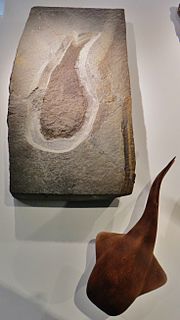 W
WLoganellia is a genus of jawless fish which lived between 430-370 million years ago, during the Silurian and Devonian periods of the Paleozoic. Loganellia belonged to the Thelodonti class and like other Thelodonts possessed scales instead of plate armor.
 W
WLongosuchus is an extinct genus of aetosaur from the Late Triassic of North America and Morocco. It measured about 3 metres in length.
 W
WMackenziurus is a genus of phacopid trilobites from the Silurian containing several species, including four named after members of the American punk band the Ramones.
 W
WNiaftasuchus is an extinct genus of therapsids. Only one species is recorded, Niaftasuchus zekkeli, from Nyafta, basin of the Mezen' River, Arkhangelsk Oblast, Russia. The family Niaftasuchidae was created by Ivankhenko in 1990, and initially attributed to the Tapinocephalia, essentially on the basis of the dentition; later it was regarded as Biarmosuchia, by share big orbits and fused vomers.
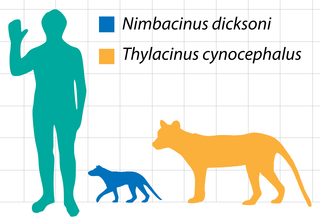 W
WNimbacinus dicksoni was an ancient thylacine a distant relative of the modern but extinct thylacinid known as the Tasmanian tiger. It lived approximately 23-16 million years ago in the Miocene period. Nimbacinus dicksoni was about 1.6 ft (50 cm) long. Being a predator, it likely ate birds, small mammals, and reptiles. Like the modern thylacine, it may have been an awkward runner and used stamina to catch prey rather than speed. Fossils have been found in Australia at Riversleigh in north-western Queensland and Bullock Creek in the Northern Territory.
 W
WPatranomodon is an extinct genus belonging to the group of Anomodontia. Rubidge and Hopson named this anomodont in 1990 after discovering its skull. Patranomodon is known to have ranged in the Karoo of Southern Africa.
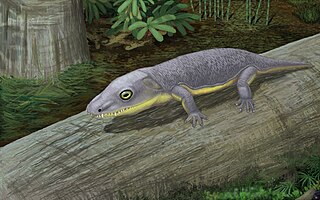 W
WPhonerpeton is an extinct genus of dissorophoid temnospondyl within the family Trematopidae that is known from the early Permian of Texas.
 W
WPinguosteus thulborni is a species of arthrodire placoderm from the Gogo Reef Formation, of Late Devonian Australia. The proportions of its armor, coupled with the relative lack of otherwise diagnostic ornamentation on the armor make its classification difficult, and so it was placed as incertae sedis within the placoderm group Coccosteina. It is the only known species of the genus Pinguosteus.
 W
WRichardoestesia is a medium-sized genus of theropod dinosaur from the late Cretaceous Period of what is now North America. It currently contains two species, R. gilmorei and R. isosceles.
 W
WSilvestrosaurus is an extinct aquatic genus of lariosaurine nothosaurid sauropterygian known from the Middle Triassic of Monte San Giorgio, southern Switzerland. It contains a single species, Silvestrosaurus buzzii, originally considered to be a species of the closely related Lariosaurus. The species was named by Tschanz in 1989, based solely on the holotype PIMUZ T/2804 comprising the skull, the lower jaw, and a dis-articulated partial postcranial skeleton. Cyamodus hildegardis tooth bearing elements were found in the stomach region of the specimen. The holotype was collected at Punkt 902 of Monte San Giorgio, from layer 97 of the Grenzbitumen zone, dating to the Anisian-Ladinian boundary of the Middle Triassic. Kuhn-Schnyner (1990) reassigned the species to its own genus, creating the combination S. buzzii. The generic name honors a church near the collection locality of the holotype, dedicated to Saint Sylvester, a Pope during the reign of Constantine the Great, and from Greek saurus, meaning "lizard", a common suffix for genus names of extinct reptile.
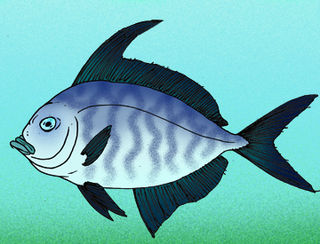 W
WVeronavelifer sorbinii is an extinct sailfin moonfish from the Lutetian epoch of the Monte Bolca lagerstatten.
 W
WWestlothiana is a genus of reptile-like tetrapod that lived about 338 million years ago during the latest part of the Visean age of the Carboniferous. Members of the genus bore a superficial resemblance to modern-day lizards. The genus is known from a single species, Westlothiana lizziae. The type specimen was discovered in the East Kirkton Limestone at the East Kirkton Quarry, West Lothian, Scotland in 1984. This specimen was nicknamed "Lizzie the lizard" by fossil hunter Stan Wood, and this name was quickly adopted by other paleontologists and the press. When the specimen was formally named in 1990, it was given the specific name "lizziae" in homage to this nickname. However, despite its similar body shape, Westlothiana is not considered a true lizard. Westlothiana's anatomy contained a mixture of both "labyrinthodont" and reptilian features, and was originally regarded as the oldest known reptile or amniote. However, updated studies have shown that this identification is not entirely accurate. Instead of being one of the first amniotes, Westlothiana was rather a close relative of Amniota. As a result, most paleontologists since the original description place the genus within the group Reptiliomorpha, among other amniote relatives such as diadectomorphs and seymouriamorphs. Later analyses usually place the genus as the earliest diverging member of Lepospondyli, a collection of unusual tetrapods which may be close to amniotes or lissamphibians, or potentially both at the same time.